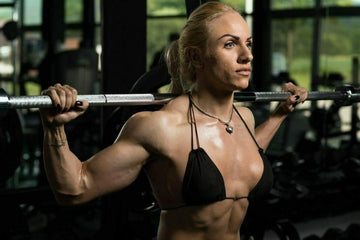Strength training and laborious lifting of weights have gone out of fashion. The new fitness trend is called functional training. It trains all the muscles in the body and puts you in a good mood. Expensive sports equipment is not necessary. Targeted exercises that we basically know from school sports make it possible. The workout for the whole body can be done anywhere and, if done correctly, trains the heart and circulation, strengthens the muscles, and prevents back problems and heart attacks.
Functional training is suitable for everyone. Whether we just want to get a little fitter or are competitive athletes preparing for a competition, the method can always be used. The former national football coach Jürgen Klinsmann made the training popular in Germany. One tried and tested method is the squat, just as well-known and hated by some. The way it is done today, however, can be really fun. You can support yourself against the wall or train without any aids. One variation is the lunge, which also requires you to balance. These exercises train all of the body's muscle groups and make us sweat at the same time. Advanced users can increase the level of difficulty as they wish. The squats can be made more intense by making variations with dumbbells.
Increase your strength with squats
Unlike the training methods from the early days of fitness studios, functional training is much more free. It is meant to be fun. This is why the training options are also popular with women who have an aversion to disciplined weight training. The new workout is also a question of lifestyle, because fitness and health have never been as popular as they are in the 21st century. Athletes are not aiming to get six-pack abs and muscles; they want to be healthy and have an athletic figure first.
One form of training is working out with your own body weight. This was actually practiced 100 years ago, but now under new conditions and with more fun. You train in a group, preferably with music and under the guidance of a trained trainer. Your own body weight replaces the training bench in the gym. Small equipment is used here too, and there is a wide variety of it on the market. Modern design and bright colors increase the enjoyment of holistic sport.
Light dumbbells, exercise balls, stretch bands and vibrating bars are popular. The kettlebell swing gives you a firm bottom and gets your thighs in shape. Training can take place anywhere. Whether on the lawn or in the gym, it's not about achieving a predetermined performance. Everyone trains according to their own ability and only as intensively as they feel no pain.
The level can be increased at any time
Functional training is a well-known method in a new guise and is now being offered more and more in fitness studios. Free weight training was already extremely popular in the 1960s, 70s and 80s. This was replaced by individual training, in which more and more muscle groups were trained. This form of training has prevailed. The varied exercises are so much fun that functional training has long since become a popular leisure sport. Although it has its roots in high-performance sport, it has been adapted to the needs of the "average consumer". Muscles are not trained in isolation, but always in groups. This requires complex movement sequences. Functional training increases performance and reduces the risk of injury. Those who train become much more resilient in everyday life.
Big muscles are out
Michael Branke, educational director of the German Fitness Teachers Association (DFLV), even believes that functional training will become even more popular. The training is offered by personal trainers as well as in gyms. There are even studios that do without weight machines altogether. Whether it's lunges or balancing on one leg, you can train at any age. Nevertheless, machine training also has its place. It is very effective after an operation, for example, to stabilize the joints again. To do this, muscles must first be built up. Even then, it is important to return to natural movements in everyday life, for example standing again as soon as possible. With good instructions, functional training can be scaled individually. If dosed correctly, it stabilizes and protects us from falls and injuries. Soon, climbing stairs will also be much easier.
Blog
Functional Training - Squats for more everyday muscles





